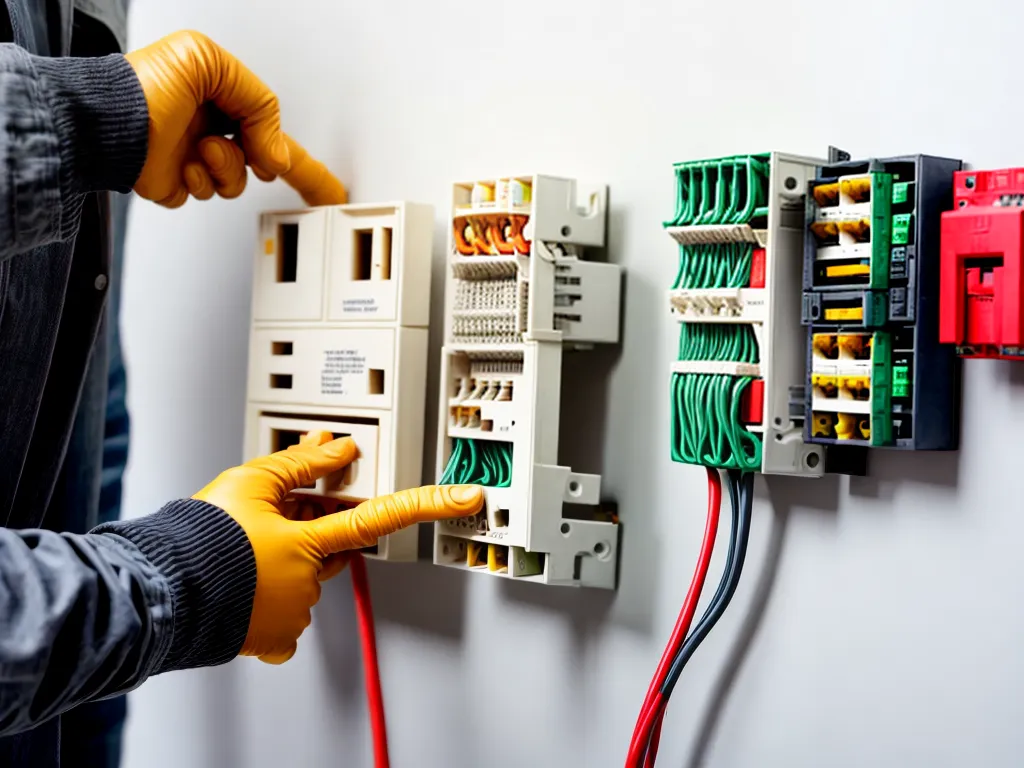
Understanding NEC Changes to Temporary Wiring Installation Codes
Temporary wiring installations are a critical part of many construction projects and events. Recent code changes to the National Electrical Code (NEC) have updated the requirements for temporary wiring, and as an electrical contractor I need to fully understand these changes. In this article, I will provide an in-depth look at the key NEC changes impacting temporary wiring installations.
Overview of Temporary Wiring Installations
Temporary wiring provides electricity on a short-term basis for construction sites, special events, repairs after emergencies, and other needs. I use temporary wiring when permanent wiring is not available or practical.
Some examples of temporary wiring installations I work on include:
- Construction site offices and lighting
- Power for tools and equipment on construction projects
- Special event setups like concerts, festivals, and conventions
- Emergency power after storms or accidents while permanent electrical systems are repaired
Temporary wiring keeps these projects moving forward safely when permanent power is not yet available. The NEC provides strict regulations for temporary wiring to prevent fires, shock hazards, and other risks from improper installations.
Key Recent NEC Changes for Temporary Wiring
The 2020 NEC includes several notable changes that impact my temporary wiring installation procedures:
Stricter Requirements for Extension Cord Use
The updated NEC has stricter rules about when and where I can use extension cords for temporary power. Key changes include:
- I cannot use extension cords as a substitute for permanent wiring
- Cord sets must be rated for hard or extra-hard usage
- I must ensure cords have proper overcurrent protection
- Cords cannot be affixed to structures, extended through walls, or have cords under carpets or doors
These rules limit using extension cords for long-term, high-current applications. I carefully consider these restrictions when using cords.
New GFCI Protection Expansions
The NEC now requires GFCI protection in more temporary wiring locations to prevent shock hazards. Changes include:
- Requiring GFCIs for lighting strings used for events, construction, and decorations
- Mandating GFCIs for power outlets in unfinished basements and crawlspaces
I install GFCIs for any temporary circuits in these higher-risk areas per the updated code.
Tighter Rules for Portable Generators
Generators are essential for many temporary wiring scenarios. New NEC rules I follow for generators include:
- Not allowing generators in unvented rooms or near combustible materials
- Requiring bonded equipment grounding conductors for all circuits
- Providing overload protection for each branch circuit
I carefully locate generators and provide full electrical protection per these changes.
Implementing the New NEC Temporary Wiring Requirements
To safely install temporary wiring, I closely review the NEC requirements before each job and purchase the proper temporary wiring equipment.
Careful Planning is Crucial
I thoroughly plan all details of the temporary installation such as wiring sizing, overcurrent protection, GFCI placement, and extension cord usage before starting work. Careful planning ensures I meet all NEC requirements.
Using Compliant Temporary Wiring Products
I only use temporary wiring products that meet the NEC standards for their intended use. For example, I buy extra-hard usage-rated cords for construction site power needs. Using compliant products is essential.
Passing Inspections Through Proper Installation
I install all temporary wiring to the letter of the NEC code. Proper installation techniques like proper supports, burial depths for underground wiring, and GFCI placement allow my work to pass inspections.
With increased temporary wiring safety requirements in the 2020 NEC, I closely adhere to the updated code during all temporary installations to keep worksites and events safe. Staying up-to-date on changes to the NEC and other codes is a critical part of my job as an electrical contractor. This overview provides key information to improve my understanding of the new temporary wiring standards I must follow.